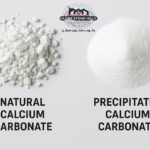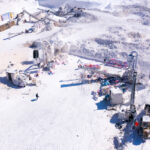Calcite

Calcite, a common and versatile mineral, plays a crucial role in many aspects of our daily lives. From the limestone rocks that form mountains to beautiful seashells, calcite appears in an amazing variety of ways in nature. Let’s explore this amazing mineral and its wide range of applications.
What is calcite
Calcite is a carbonate mineral composed primarily of calcium carbonate (CaCO₃). It is one of the most common minerals on Earth, and is the main component of many sedimentary rocks such as limestone and dolomite. Calcite is moderately hard and has a translucency that can range from completely transparent to opaque, and is found in a variety of colors including white, gray, pink, and yellow.
Also Read Calcium Carbonate in the Construction
Calcite properties
- Hardness: Calcite ranks at 3 on the Mohs hardness scale, meaning it can be easily scratched by harder materials such as copper.
- Refractive index: Calcite has a conchoidal refraction, meaning it breaks into pieces with flat, bright surfaces.
- Crystalline formation: Calcite occurs in various crystalline forms, including cubes, pyramids, and lenses.
- Reaction with acids: Calcite reacts with acids, such as hydrochloric acid, resulting in the formation of bubbles of carbon dioxide gas.
The importance of calcite
- Construction Industry: Calcite is widely used in the manufacture of cement, gypsum and paint, due to its adhesive properties and ability to form strong compounds.
- Glass industry: Calcite is used in the glass industry to enhance its clarity and transparency.
- Papermaking: Calcite is used as an additive in papermaking to improve its surface finish and gloss.
- Fertilizers: Calcite is used in the manufacture of agricultural fertilizers to provide the soil with the calcium needed for plant growth.
- Gemstones: Some pure, transparent types of calcite are used as gemstones in jewelry making.
- Archaeology: Calcite is used to determine the age of fossils and sediments, thanks to its ability to preserve traces of living organisms.
Calcite Formation
Calcite is formed in different ways, including:
- Chemical precipitation: Calcite is formed when water saturated with calcium carbonate evaporates, causing calcite to precipitate in the form of crystals.
- Activity of living organisms: Many marine organisms, such as clams and mollusks, build their shells from calcium carbonate.
- Metamorphism: Some other minerals can be transformed into calcite by natural factors such as pressure and heat.
Calcite is an essential mineral that is important in many industries and applications. It has unique physical and chemical properties, making it an essential raw material in many industrial processes. In addition, calcite plays an important role in understanding the history of the Earth and the evolution of life on it.
Recent Posts
- Globe Stone Hills: Your Comprehensive Guide to High-Quality Calcium Carbonate Solutions
- The Role of Calcium Carbonate in Soap and Detergent Manufacturing
- Precipitated vs Ground Calcium Carbonate: Key Differences, Uses & Benefits
- Calcium Carbonate Quarries in Egypt | High-Purity White Mineral for Industries
- Difference Between Coated and Uncoated Calcium Carbonate
Latest Posts
Contact the Globe Stone Hills team
Gallery
- © Copyright 2024. Globe Stone Hills




















